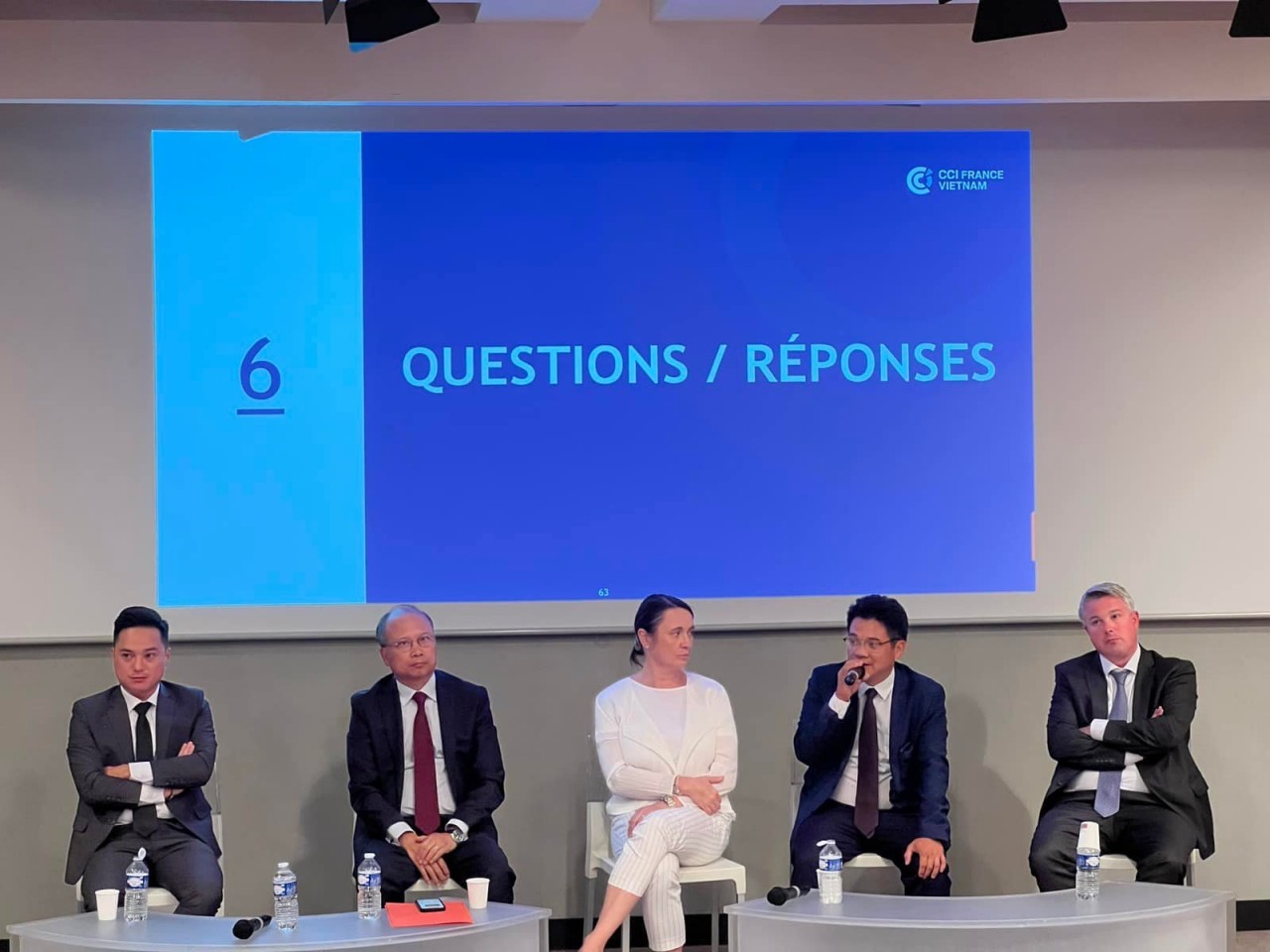Post Covid-19 Physical Exercises: How To Exercise To Improve Your Health
Whether you’re a student-athlete or active adult who has recovered from COVID-19, you’re likely itching to get back on the field or resume your exercise routine. Or, if you don’t have symptoms or if your illness is mild, you might be wondering what activities you can do while you wait out the infection.
Getting back to your exercise routine after Covid – or an injury or any illness – requires some careful planning, a certain amount of self-restraint to safely achieve optimal results, and more importantly, prevent serious negative outcomes. At first, you won’t be able to run as fast as usual or lift as much weight as before. With a bit of patience and determination, soon enough you’ll be back on track.
People who are active typically have a hard time being relegated to the couch, so it’s important to accept the situation and tame the mental agony that comes with a period of inactivity. Your return to exercise after Covid will require some work to overcome both physical and mental demands.
Many long-term effects are still unknown
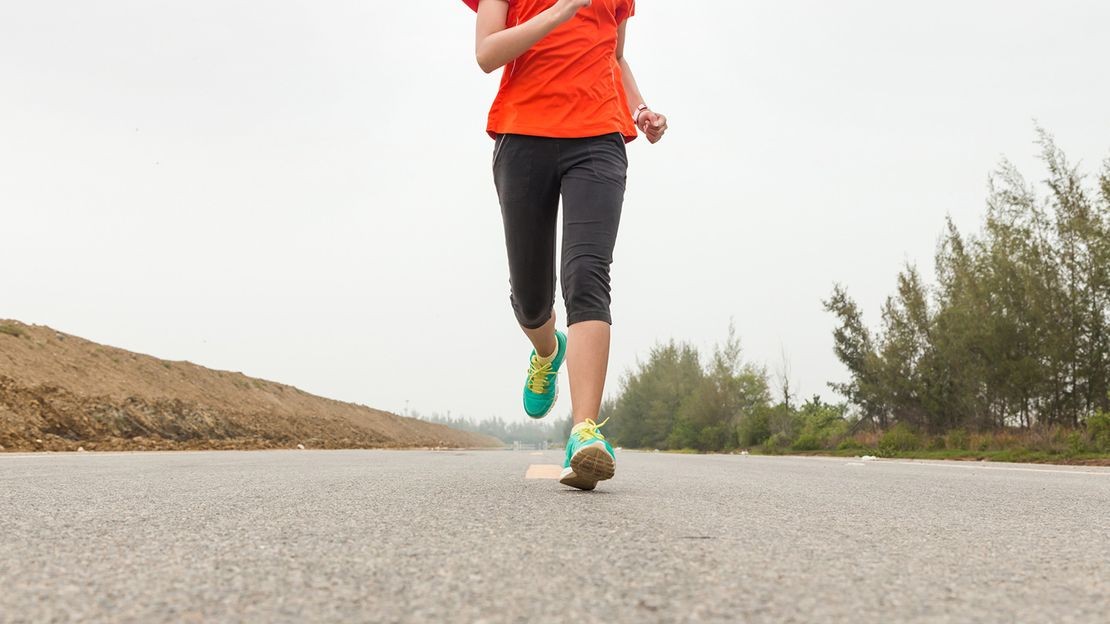 |
| Photo: Getty Images |
We certainly know more now than we did when the pandemic began, but much is still unknown about the long-term effects of COVID-19. We know that the virus can lead to damage of the heart, brain, lungs, and kidneys, but there’s no way to pinpoint or predict who exactly these individuals will be. Some people might also experience lingering symptoms, including shortness of breath, muscle aches, loss of stamina, and exhaustion – all of which are bad news, but particularly so for athletes and active people.
“The truth is, the disease can affect everyone differently,” says Dr. Schaefer. “Anyone, including young athletes, could experience a severe case or have long-term damage, which is why it’s so important to take this seriously.”
This is especially true with active individuals, as it can be difficult to tell what long-term effects someone is going to have after they recover from the virus. Some people might fare just fine and will be able to jump back into their old training regiment, while others will find that their athletic performance just isn’t what it used to be.
For the majority of athletes and active people, returning to the activity will likely be a slow process and will require patience. You should work with a healthcare provider to make sure you’re progressing appropriately and monitoring your symptoms.
Returning to Exercise Should Be Individualized
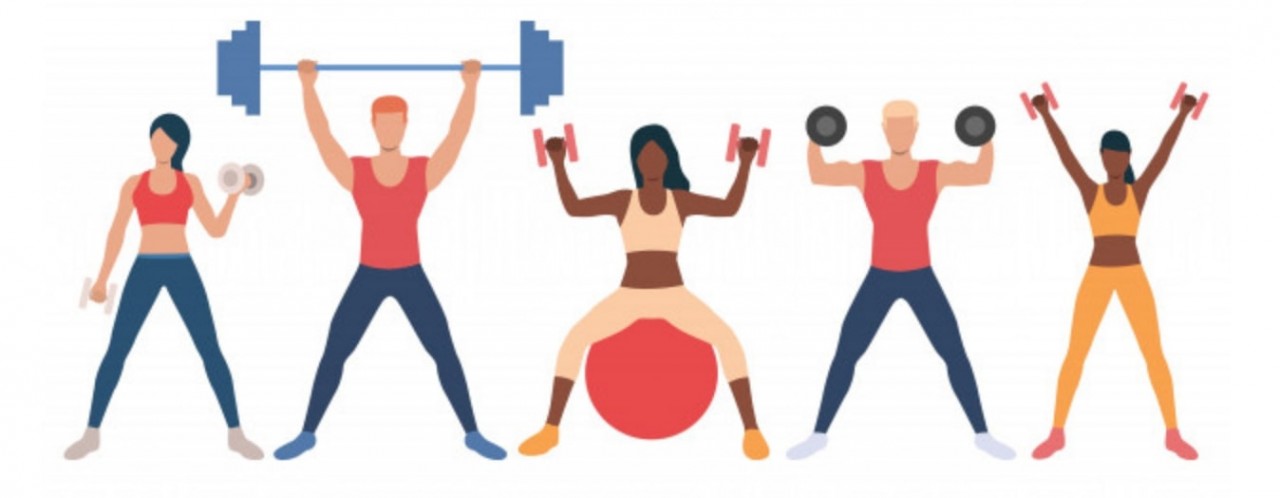 |
| Photo: Baamboozle |
Sports medicine physicians at the Hospital for Special Surgery (HSS) in New York City issued recommendations for recreational athletes returning to physical activity after being infected with COVID-19.
The list of considerations and recommendations was published in August 2020 in the HSS Journal. The authors note that each patient with COVID-19 is unique, and there can be a wide variance of how each person experiences the virus. The guidelines also note that each person recovers from COVID-19 at a unique rate, and there is currently no algorithm to determine exactly how and when an individual should return to activity.
“There isn’t a clear, uniform response in people that recover from COVID-19,” says James Borchers, MD, a sports medicine doctor at the Ohio State University Wexner Medical Center in Columbus.
It makes sense for everyone — even people who had only mild to moderate symptoms or even no symptoms at all — to connect with their healthcare provider so that they can have some discussion about how to begin to return to exercise appropriately as well as how to increase intensity appropriately, says Dr. Borchers.
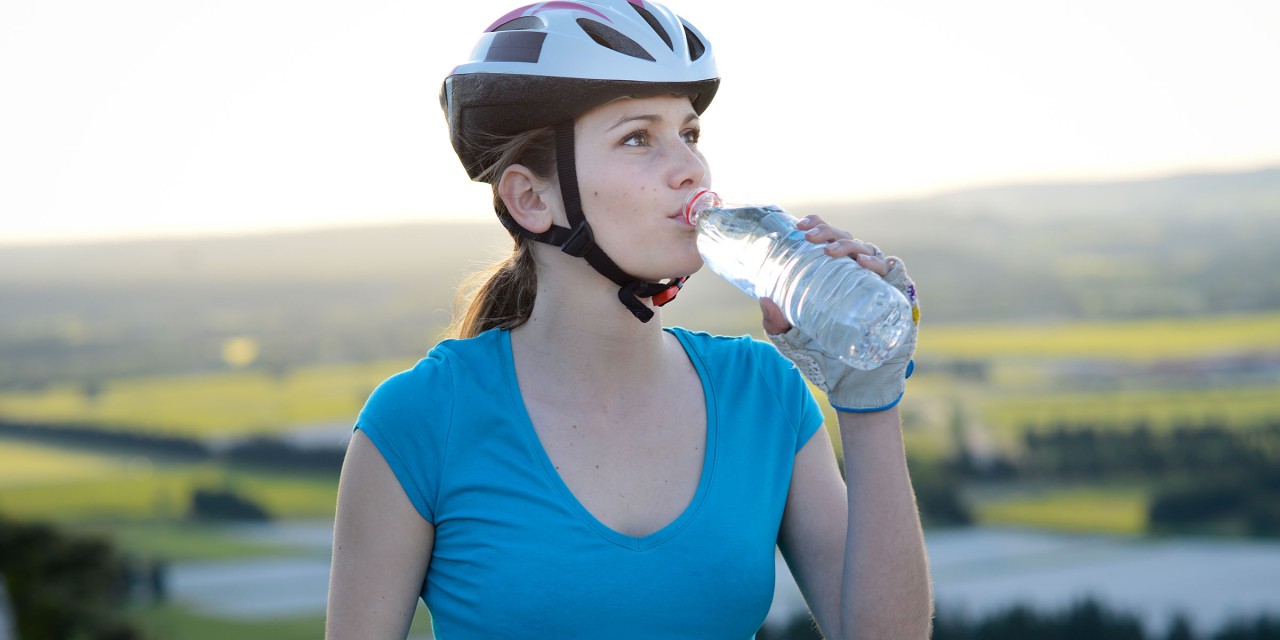 |
| Photo: Getty Images |
Other recommendations from the HSS Journal paper:
- Exercise should not resume if a patient with COVID-19 has a persistent fever, dyspnea (breathlessness) at rest, cough, chest pain, or palpitations.
- Any COVID-19 patient with an underlying cardiovascular or pulmonary condition should consult a physician prior to resumption of exercise, even if asymptomatic.
- An otherwise healthy patient with a self-limited course of COVID-19 who has been asymptomatic for seven days may begin resuming physical activity at 50 percent of normal intensity and volume.
- Consultation with a physician is recommended if patients who have had COVID-19 develop chest pain, fever, palpitations, or dyspnea on the resumption of exercise.
“These guidelines make sense and are appropriate as long as we keep in mind that every individual is unique, and the activity that they’re returning to is unique,” says Borchers. “For some people, starting at 50 percent of what did before they were infected with the virus may prove too challenging.” Further modification may be needed.
These guidelines were written before the emergence of the delta variant of COVID-19 (and several others), but they still apply to cases caused by the various variants, says James N. Robinson, MD, a primary sports medicine doctor at HSS in New York City and a co-author of the paper.
“It is important to wear masks and practice social distancing when exercising indoors around others,” Dr. Robinson says. The Centers for Disease Control and Prevention advises that outdoor activities are still safer than indoor ones (particularly when it comes to exercising indoors at a gym or in a fitness studio), and masking in indoor public spaces can help lower COVID-19 transmission risk.
How to return to training after Covid – 19
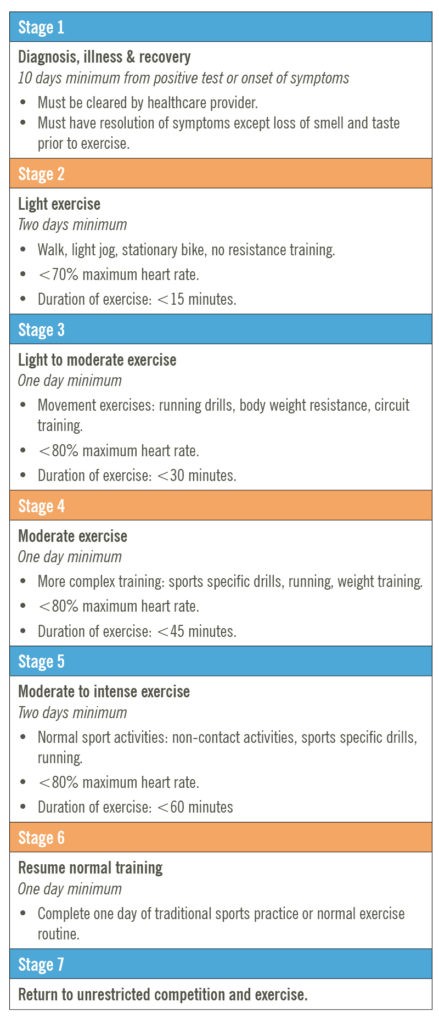 |
| Photo: Cleveland Clinic |
Once you’re symptom-free and you’ve rested enough, you should start slow and gradually up the intensity. Here are a few recommendations to exercise after Covid.
WALK BEFORE YOU RUN
On the first day, you start exercising after Covid, go for a brisk walk, maybe no longer than 20 or 30 minutes and keep your heart rate in zone 1. How does this stroll feel? A walk is a good way to gauge whether you’re ready to resume exercising.
You’d be surprised by how much a walk wears you down. It’s normal to feel tired and weaker than usual. Take the next day off and let your body go back to recovery mode. Just add some light stretching to keep your body active.
START WITH CARDIO
When you fall ill with a viral infection, your body becomes a battlefield in which white blood cells fight the virus. Like rubble after the battle, your muscles will be beaten down, weakened, and unable to tolerate the pre-sick levels of effort. Your underused muscles will get sore a lot quicker. Use them too hard and you’ll risk a tear or a strain.
That’s why it’s a good idea to focus on easy cardiovascular exercises first and save weightlifting and strength work for later. Swimming, elliptical, cycling, or easy runs are good options as you’re easing back in – avoid exercise that puts much stress on your muscles.
LISTEN TO YOUR HEART
Monitoring your heart rate can help you keep the intensity down, ensuring you don’t exceed your limits. It is also a good way to see exactly where you are in terms of your previous fitness.
After illness, your training heart rates have become a bit higher. Keep the intensity of your workouts down to avoid putting your body under pressure too early. You’ll need to do some base work before it’s time to start intensity training – ideally, you want to wait until training heart rate zones are back in line with your pre-sick workouts.
STICK TO THE 50% RULE
But even if you focus on cardio, don’t overdo it to compensate for the lack of strength work. Experts suggest doing about 50% of your usual volume. For your first cardio workouts after Covid go for shorter runs, rides, swims, or other cardio activities. If you used to spend 30 minutes on the elliptical, start with a 15 minutes session.
SLOWLY INCREASE WORKOUT INTENSITY
If your recovery is on track and your body responds well to low-intensity workouts for a couple of days, you may be tempted to jump up to 100%. Adding too much intensity too fast, too soon is never a good day – wait a bit until you do high-intensity interval training.
Add more workout volume gradually: bump to 60% first, of for 75% in the next week.
DON’T TRY TO MAKE UP MISSED WORKOUTS
If you’re following a strict plan, like a marathon training plan, missing a few workouts can bring some negative energy and make you eager to make up for the lost time when you come back, planning an extra-long run or an additional interval workout.
In this case, remind yourself there isn’t a perfect training cycle. Move past the lost time and don’t try to make up missed workouts. You’ll be adding extra effort to the workflow, risking injury. Instead, scale down your plan so you gradually ease in.
LET FATIGUE (AND YOUR BODY) GUIDE YOU
This is as obvious as it gets. Whether you’re in recovery mode or in your peak form, always listen to your body. When you return to exercise after an illness like Covid, it’s extra important to pay attention to any signs of exhaustion.
One way to keep fatigued in check is to add extra recovery days to your training plan for several weeks. If you used to go for a run five days, go only four days and add some active recovery, like walking, instead.
 | Top 15 Best Workout Songs To Boost Up Your Exercise Moods Doing exercise can be stressful sometimes, and science has proven that listening to music while working out can help easing the stress and boosting immune ... |
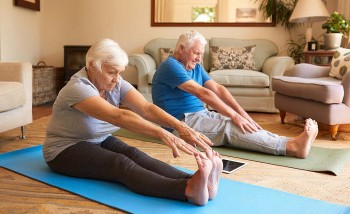 | Top Indoor Exercises to Stay Active for Men and Women While we keep our distance to stop the spread of Covid-19, staying active is critical for both our physical and mental health. |
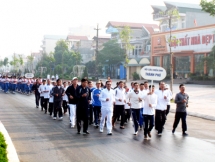 | Quang Ninh province boosts sports and physical exercise in following Uncle Ho’s example Fifteen years after the implementation of the campaign “All the people practice physical training following great Uncle Ho”, the northern province of Quang Ninh has ... |
Recommended
 Handbook
Handbook
Vietnam Moves Up 8 Places In World Happiness Index
 Handbook
Handbook
Travelling Vietnam Through French Artist's Children Book
 Multimedia
Multimedia
Vietnamese Turmeric Fish among Best Asian Dishes: TasteAtlas
 Handbook
Handbook
From Lost to Found: German Tourist Thanks Vietnamese Police for Returning His Bag
 Handbook
Handbook
Prediction and Resolution for the Disasters of Humanity
 Handbook
Handbook
16 French Films To Be Shown For Free During Tet Holiday In Vietnam
 Handbook
Handbook
Unique Cultural and Religious Activities to Welcome Year of the Snake
 Handbook
Handbook

